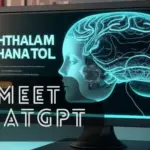Generative AI and its Applications

Table of Contents
Introduction:
In recent years, the field of artificial intelligence (AI) has witnessed remarkable advancements, and one area that has garnered significant attention is generative AI. Generative AI models have revolutionized the way machines learn and create, enabling them to generate new and original content. In this article, we will explore the fascinating world of generative AI, understand its key concepts, explore examples, and delve into its applications.
What is Generative AI?
Generative AI refers to a subset of artificial intelligence that focuses on creating models capable of generating original content, such as images, music, text, or even videos. Unlike traditional AI models that are designed to perform specific tasks, generative AI models have the ability to learn from large datasets and generate new and unique outputs.
What is the Difference Between Generative AI and Generative Models?
Generative AI is a broader concept that encompasses generative models. Generative models are algorithms or architectures that enable machines to generate new data by learning from existing data. Generative AI, on the other hand, is the field that studies and develops these models, exploring their potential in various domains.
Example of a Generative Model: Variational Autoencoders (VAEs)
One popular example of a generative model is Variational Autoencoders (VAEs). VAEs are neural network architectures that learn to encode and decode complex data. By training on large datasets, VAEs can generate new instances similar to the training data. For instance, VAEs can be trained on a dataset of human faces and then generate new, realistic faces that do not exist in the original dataset.
List of Generative Models:
- Generative Adversarial Networks (GANs): GANs consist of a generator network that generates new data samples and a discriminator network that tries to distinguish between the real and generated samples. Through a competitive process, GANs can generate highly realistic and diverse outputs, such as images, music, and even human-like text.
- Recurrent Neural Networks (RNNs): RNNs are generative models commonly used for sequential data, such as text or music. These models have a recurrent structure that allows them to generate sequences based on the patterns learned from the training data. RNNs have been utilized to generate text, compose music, and even create captions for images.
- Transformer Models: Transformer models, such as OpenAI’s GPT (Generative Pre-trained Transformer) series, have gained significant attention for their ability to generate coherent and contextually relevant text. These models leverage self-attention mechanisms to capture dependencies across the input sequence and generate high-quality textual outputs.

What are Generative Models Used For?
Generative models find applications in various domains, including:
- Content Generation: Generative models can create new and original content, such as artwork, music, and writing. They are used by artists, musicians, and writers to explore new creative possibilities and augment their own artistic processes.
- Data Augmentation: Generative models can be employed to generate synthetic data samples, which can augment existing datasets for training machine learning models. This approach helps to address data scarcity issues and improve the performance of AI systems.
- Anomaly Detection: Generative models can learn the patterns and characteristics of normal data. By comparing new instances to the learned model, generative models can identify anomalies and detect potential fraud or abnormalities in various applications, such as cybersecurity or healthcare.
How to Create a Generative Model?
Creating a generative model involves several steps:
- Data Collection: Gather a comprehensive dataset related to the domain you want the generative model to focus on. For instance, if you want to generate images of birds, collect a large dataset of bird images.
- Model Architecture Selection: Choose an appropriate generative model architecture based on the type of data and the desired output. GANs, VAEs, and Transformer models are among the popular choices.
- Training: Train the generative model using the collected dataset. This typically involves optimizing the model’s parameters through techniques like backpropagation and gradient descent.
- Evaluation and Fine-Tuning: Evaluate the generated outputs and fine-tune the model to improve the quality and diversity of the generated content. Iterative experimentation is often required to achieve desirable results.
FAQs:
Q: What is the best definition of Generative AI?
A: Generative AI refers to the subset of artificial intelligence that focuses on creating models capable of generating new and original content by learning from existing data.
Q: Is CNN a Generative Model?
A: No, Convolutional Neural Networks (CNNs) are not generative models. They are primarily used for tasks such as image classification and object detection.
Q: What is the Difference Between Generative AI and General AI?
A: Generative AI focuses on creating models that can generate new content, while general AI aims to develop machines that possess human-like intelligence and can perform a wide range of tasks beyond specific domains.
Conclusion:
Generative AI has unlocked exciting possibilities for machines to generate new and creative content. Through generative models like GANs, VAEs, and RNNs, AI systems can create images, music, and text that inspire and push the boundaries of human imagination. As this field continues to evolve, generative AI holds immense potential to transform various industries and contribute to further advancements in artificial intelligence.











